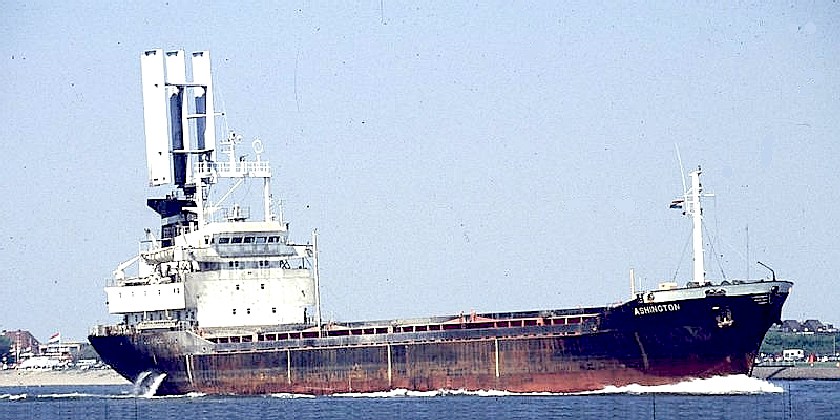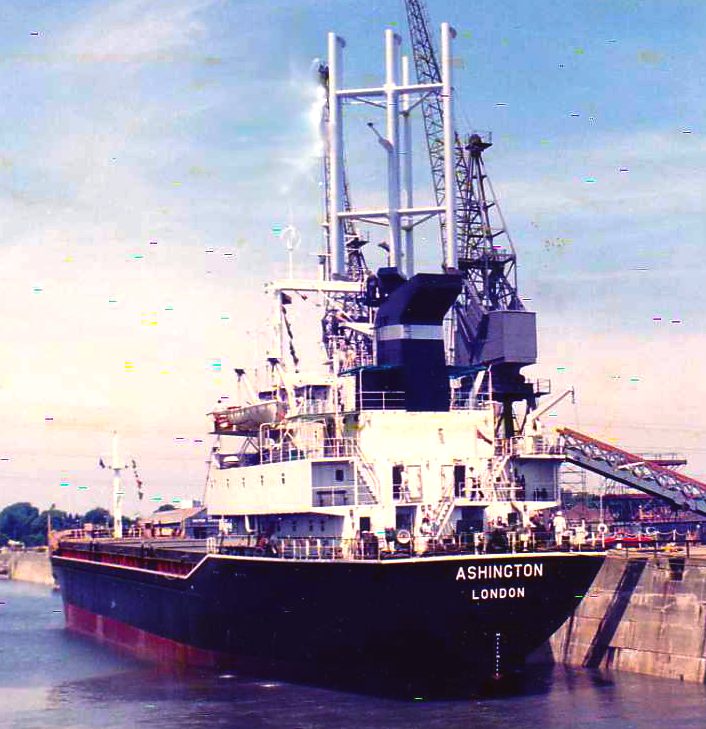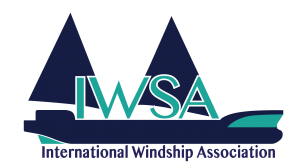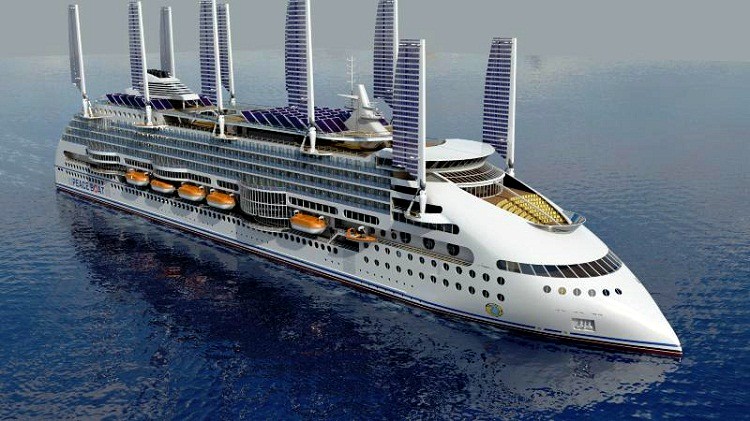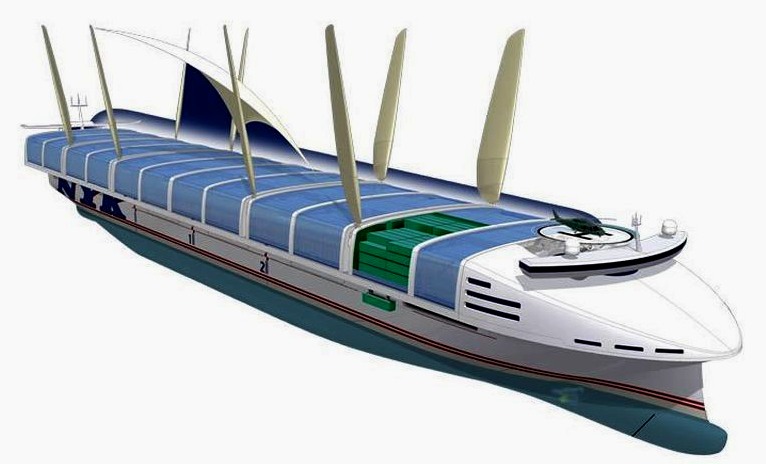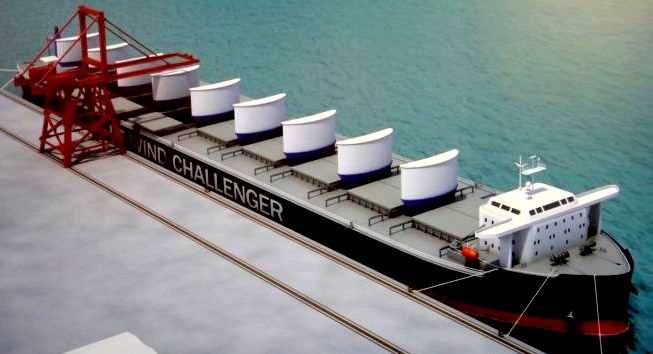|
WALKER WINGSAILS
Please use our A-Z INDEX to navigate this site where page links may lead to other sites
|
||||||||||||||||||||||||||||||||||||||||||||||||||||||||||||||||||||||||||||||||||||||
|
1987 CONVERSION - This cargo vessel started life as the Ashington, registered at London in 1979. Ten years later she was re-registered in the Isle of Man (1989). In 2004 she was renamed Fjord Pearl while registered in Nassau. Then again is 2007 a name change to JP Fox and registration at Bergen. Finally in 2008 she was registered in Panama and renamed Milano Star.
The 'Wing Sail' concept emerged out of the U.S. government commissioned a study in the 1980s that went into the economic feasibility of wind assisted propulsion in response to soaring fuel prices.
This system was designed as an automated mechanism of solid, rectangular sails on a framework of cylindrical masts. They would adjust automatically to changes in wind direction and would need minimal handling.
Despite the fact that trials of the wing sail fitted aboard a small freighter demonstrated fuel savings of between 15% and 25%, the concept failed to make it big where oil prices fell so that research as to alternatives did not seem important to fleet operators - and the IMO just seem to have gone along with that.
A revival of the wing-sail concept now focuses on collapsible wing sails, rather than rigid sails, or vertical wings. The Walker wingsail system proved the concept for others to build on.
Walker Wingsail Systems plc built and sold an 8 tonne wingsail for use on MV Ashington in 1986. Collapse of world oil prices destroyed the economic case for use of wingsails in commercial shipping and the company turned to the luxury yacht markets and launched the trimaran design Blue Nova in 1990 and a smaller 43ft Zefyr trimaran design of which four were produced between 1997-2001.
SAN FRANCISCO 42ft TRIMARAN 2014 - Wind & Wing Technologies testing of the green sailed vessel had gone well according to Jay Gardner. The ease and simplicity of the wing assisted 42' trimaran has been better than originally anticipated. Even the parts you think might present problems, mostly docking and departures are easy, thanks to the sails ability to feather. " It's actually has less resistance than a conventional rig" says Jay. He adds that the current testing with and without power on the 45' "Trilliza", custom trimaran, will present a study on the fuel consumption and efficiency of the winged trimaran. The wing is 350 sq ft and rotates 360 degrees on a tapered spar that is 15" in diameter. The wing Richard Jenkins designed for the Greenbird works beautifully.
Adventure Cat's Co founder Jay Gardner has been lobbying to see wing assisted ferries sailing on San Francisco Bay and has partnered with Jenkins to build a scale model of the proposed wing powered ferry and has been testing the boat around San Francisco Bay
Jay owns a canvas shop in Napa and the were able to cut the lower panel to sit flush with the tri's existing deck. The were able to utilize Trilliza's existing mast step and only had to cut a hole through the deck to insert the spar. The wings tail simplifies s the process of sailing so much that a robot does the trimming. The robot controls only three moving parts: the elevator-like tab on the tail, the rudder, and the free-rotating wing itself.
It was by shear luck that Stan Honey caught wind of the project and introduced Jay to Richard, who was recently relocated just across the bay from Jay's Adventure Cat business at Pier 39. Jay had bee in talks with the the Navy in San Diego about an experimental wing they had designed. As it turns out Richards design was not only extremely cheaper but simpler in design.
The concept for the winged ferry is something Jay and business partner Hans Korfin had in mind since the 80's , but it was the steep price in fuel cost's that re-energized the concept. With diesel prices reaching near $5.00 per gallon on the spot market, Jay's proposal to the Golden Gate Bridge District's Jim Swindler was fortuitous in timing. "The District burns through nearly 1,000,000 gallons of diesel per year running their ferries," Says Jay, " We presented them with a 32 page engineering feasibility study done by Pete Melvin of Morelli & Melvin which showed a 42% savings in fuel probability PLUS a very large drop in emissions. With that information they were enabled to apply for grants from the Air Resources Board, which enable the project to move forward.
Wind+Wing Technologies has partnered with Photon Composites, pioneers in innovative computerized wing technology, to develop a demonstration vessel for ferry routes on the San Francisco Bay. The vessel is a 42-foot trimaran equipped with a computerized wing, specifically designed to harness wind power to significantly reduce fuel consumption and emissions. In January 2014, the demonstration vessel will begin test sailing five days a week, for three months, on the following ferry routes from the San Francisco Ferry Building to: Sausalito - Richmond - Treasure Island - Alameda
The demonstration period will track vessel reliability, speed, and fuel savings during a varied wind season, all while replicating a realistic ferry schedule. Data compiled during the demonstration will be forwarded for analysis to Dr. Timothy Lipman, Co-Director for the Transportation Sustainability Research Center at the University of California, Berkeley. The data will be presented in a final report, which will be made available to the public, and will document potential improvements in air quality and fuel cost savings from employing this technology on San Francisco Bay ferry vessels. This demonstration project is made possible by a grant from the Air Quality Improvement Program (AQIP) through the California Air Resources Board (CARB), with additional funding and grant administration by the Bay Area Air Quality Management District (BAAQMD), as well as Adventure Cat Sailing Charters and Photon Composites.
COOKE
ASSOCIATES
Like most visionary technologies, wingsails have struggled to gain acceptance despite their superior performance. But there are now a number of firms working with the technology.
WIND ROCKET
SUSTAINABLE CONTAINER SHIPS - This 50m concept vessel may be doubled and quadrupled without too much trouble. You'd need to up-scale by a factor of 8 to match the 400 meter ships that operate today to carry 960 standard containers. See our top ten list below. That is nowhere near the capacity of a heavy bunker fueled giant, but it is a formula for eventual 100% zero carbon transportation that is theoretically workable. We believe that such a system could eventually replace bunker fuels and eliminate the need for liquid fuels that may be potentially dangerous.
CARGO CONTENDERS A list of the top ten fossil fueled leaders that could benefit from solar and wind assistance. You may notice from the specification of these vessels that we are in the right ballpark for power to cargo ratio when comparing DWT to installed engine power:
The concept of using wind power with conventional steam and diesel engines as a hybrid propulsion system for ships has been with us since the early paddle steamers. Before that the Romans used sails and slaves to row, so assisting the speed of a sailing ship with muscle power. With diesel being such a polluter, a return to sailing ships of a kind that is not dependent on human muscle is a good thing, where that would not be economical or environmentally friendly from the food consumed.
HONEY
BADGER 2014 - The "Honey Badger" is the name of the Saildrone vessel that sailed from San Francisco to Hawaii autonomously in 2014.
Jenkins realized that the wing he’d evolved for the Greenbird would be perfect on an oceangoing drone. Its tail simplified the process of sailing so much that even a robot could handle it. The bot would need only three moving parts: the elevator-like tab on the tail, the rudder, and the free-rotating wing itself. What’s more, only two of those parts—the tail tab and the rudder—would need power. A few off-the-shelf solar panels would provide more than enough. Jenkins knew from long experience that the fewer parts there were, the fewer parts there were to break. His oceangoing drone needed to be single-minded, bulletproof, and absolutely spartan.
Jenkins and Owens are the engineering duo behind Saildrone, which in the words of their website is "a wind-powered autonomous surface vehicle." On October 1, the 19-foot craft was set loose in the San Francisco Bay with a simple command lodged in its electronic brain: Sail to Hawaii. For 2,248 nautical miles the boat did the rest. The path it chose happens to be identical to that of the annual Pacific Cup sailing race, and the fastest anyone has traversed this course is just over five days. The single-handed-sailing record is eight and a half days. As Jenkins and Owens look on, Saildrone is about to complete what might be called the first no-handed ocean sail: San Francisco to Hawaii in 34 days. It's not quick, but then again there is no one aboard to complain.
The journey has included a storm with gale-force winds followed by two weeks of doldrums. During the tempest, Saildrone was reporting speeds of up to 16 miles per hour and angles as extreme as 75 degrees, meaning it was heeled over and surfing down the backside of breaking waves—waves with enough power to snap it in two had they caught the boat in the wrong position. The doldrums were equally worrisome: With no one aboard to scrub the bottom, algae, seaweed, and barnacles might have overtaken Saildrone, transforming it into just another piece of flotsam.
As the vessel sails into sight, it is noted that it's a streamliner - a narrow hull stabilized by two outriggers, one on each side, otherwise known as a trimaran. Its "sail" is a sail in name only; in reality it's a 20-foot-high, solid carbon-fiber wing. Extending from the back of this wing, halfway up the mast, is a tail - just like an airplane's. ("That's a little trick that I stole from the Wright brothers," Jenkins says.) Above the waterline the boat is painted safety orange and emblazoned with the words OCEAN RESEARCH IN PROGRESS in all caps. The hull is black with bottom paint, and near the bow is the name in a fancy serif: Honey Badger.
The Honey Badger is more than a sailboat and more than a robot, although it's both of those things. The Pacific crossing is really a test of a new type of sail that automatically keeps itself pointed into the wind, like a weather vane. Adjusting a little tab on the back of the tail—a task handled by the Honey Badger’s autopilot—is enough to maintain the correct course and to angle the wing so it creates forward thrust. There's no need to employ ropes, winches, or even sailors. The mechanism is so simple it might really be best regarded as a plug-and-play power source. Like a windmill, it converts a ubiquitous natural resource into usable energy.
A - Z SAIL AND SOLAR ASSISTED BOATS & SHIPS
LINKS & REFERENCES
https://www.wired.com/2014/02/saildrone/#x http://www.pressure-drop.us/forums/content.php?4206/ http://saildrone.com/ http://www.kemplon.com/wind-assisted-ship-propulsion-back-to-the-future/ http://wind-ship.org/en/grid-homepage/
TRANSFERABLE TECHNOLOGY - The design of the Climate Change Challenger might be adapted to Cargo, Container, Cruise and Ferry designs, without needing to radically alter port facilities. The designs above are not representative of adaptations of the concept, but serve to illustrate the thinking of other design houses.
Please use our A-Z INDEX to navigate this site
AEGEAN - ADRIATIC SEA - ARCTIC OCEAN - ATLANTIC OCEAN - BALTIC SEA - BAY OF BENGAL - BERING SEA - CARIBBEAN SEA - CORAL SEA EAST CHINA SEA - ENGLISH CHANNEL - GULF OF GUINEA - GULF OF MEXICO - INDIAN OCEAN - IONIAN - IRISH SEA - MEDITERRANEAN SEA NORTH SEA - PACIFIC OCEAN - PERSIAN GULF - SEA OF JAPAN - SOUTH CHINA SEA - SOUTHERN OCEAN - TYRRHENIAN
|
||||||||||||||||||||||||||||||||||||||||||||||||||||||||||||||||||||||||||||||||||||||
|
This website is provided on a free basis as a public information service. copyright © Climate Change Trust 2019. Solar Studios, BN271RF, United Kingdom.
|
